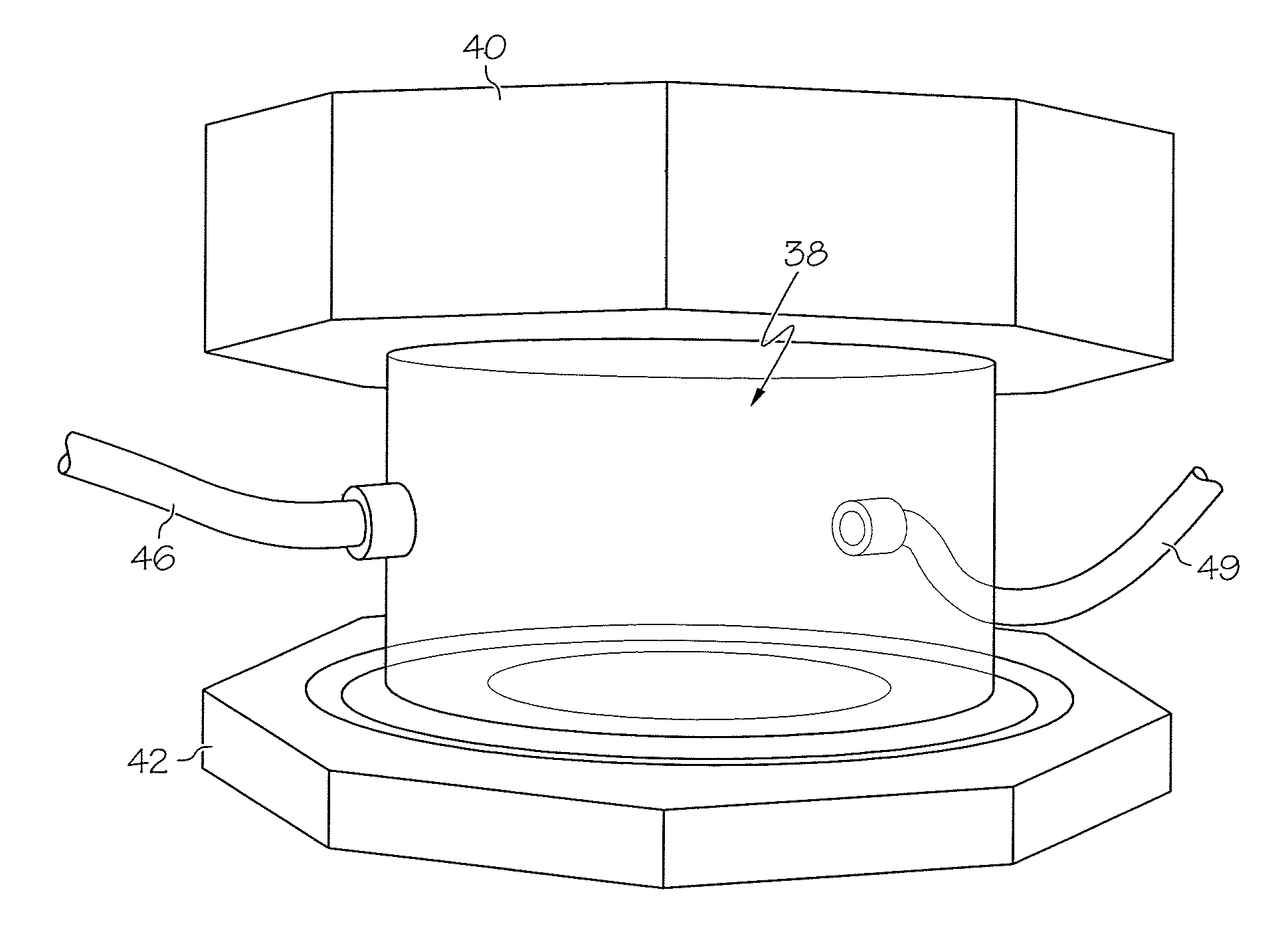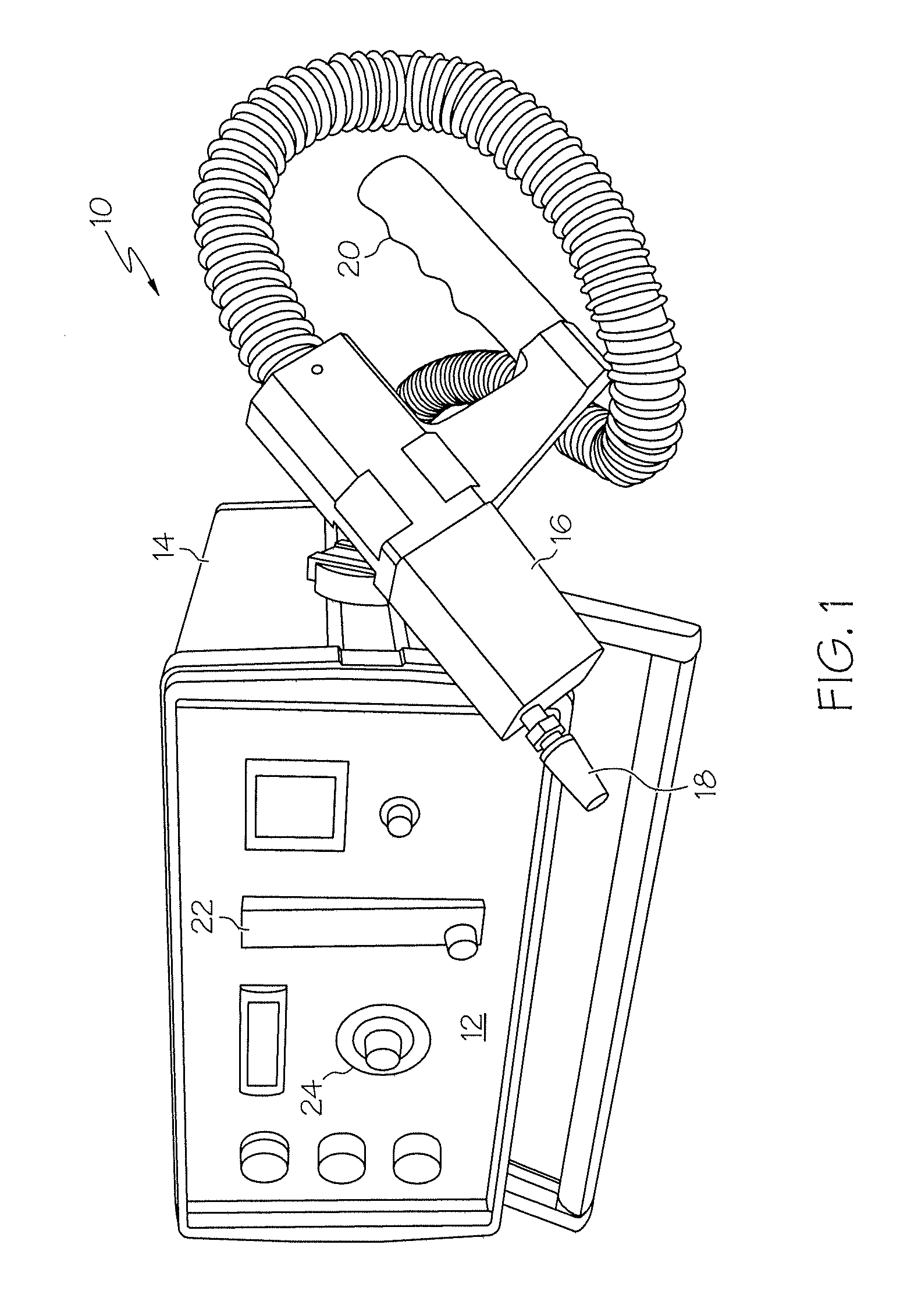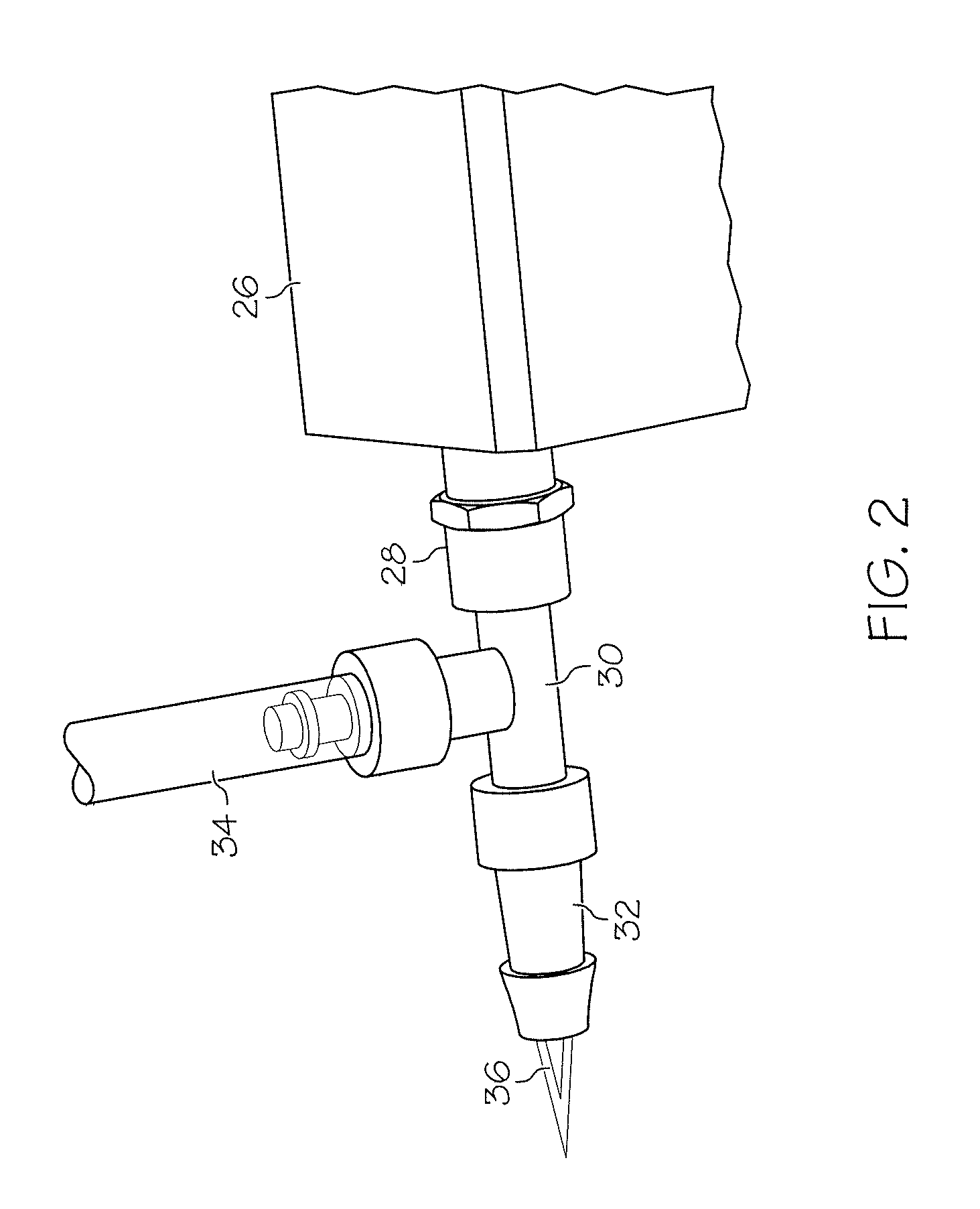Atmospheric plasma coating for ophthalmic devices
a technology of atmospheric plasma and contact lenses, which is applied in the direction of coatings, packaging under special atmospheric conditions, packaging, etc., can solve the problem that the treatment of plasma under low pressure of silicone hydrogel contact lenses may not be cost effectiv
- Summary
- Abstract
- Description
- Claims
- Application Information
AI Technical Summary
Benefits of technology
Problems solved by technology
Method used
Image
Examples
example 1
Etching of Lenses by Argon, or Argon / Air, Argon / O2 Atmospheric Plasma
[0081]An experimental set-up is shown in FIG. 4. A carrier gas 40 is fed thru a plasma generator 42 (e.g., Plasma Treatment System, PT-2000P or PT-2000, from Tri-Star Technologies) that controls the plasma power as well as the flow rate of the carrier gas. Additional gas or gas mixture 44 (e.g. air, or oxygen in this example or acetylene in other examples) is fed thru the plasma nozzle or mini-chamber 46. Wet uncoated lotrafilcon B lenses (after blot dry using lint-free clean cloth (Alpha Wipe TX1009) to remove water on lens surface) or dry lotrafilcon B lenses are placed in a chamber, otherwise herein referred to as a “mini-chamber”, and treated with atmospheric plasma using different gases or gas mixtures. The lenses become wettable after treatment, but become no longer wettable after autoclave in phosphate buffered saline.
Lot #ConditionsIndividual contact angleAAr, 10 LPM* (liter per minute), 2 min,28, 28, 26, 2...
example 2
[0082]A few coating runs are performed on Si wafer using acetylene (C2H2) and air mixture. The silicon wafer is placed inside the mini-chamber. As listed in following table, the mixture composition would impact coating thickness.
TABLE 1Coating thickness as measured by ellipsometry.Air (sccm)Thickness on Si wafer (Å)Contact angel on Si (degree)5839, 78355, 5510946, 86956, 5620773, 79246, 4630664, 64150, 5050308, 380, 40642, 4250411, 390, 374n / aThe coating parameters are as following: 0.1 LPM of C2H2, 2 min coating, with helium as the carrier gas. Allow gas flow through the mini chamber for about 5 min before coating.
example 3
Wettable and Stable Coating with Acetylene (C2H2) / Air Atmospheric Plasma
[0083]Uncoated lotrafilcon B lenses from CIBA VISION are coated with the use of PT2000 plasma generator and a mini plasma chamber. An exemplary of parameters used is as following: argon flow rate at 6LPM, 0.1LPM C2H2, 40 sccm of air, and 20.8 KHz frequency for the plasma generator.
[0084]A total of about 3 minutes of plasma treatment (about 1.5 minutes for each side) is performed using dry lenses (7-15-E). Each lens is “sandwiched” between two metal wire holders. The lenses are flipped after the first 1.5 min plasma treatment. Another experiment is performed using same coating parameters except a total of one time of 3 min plasma treatment (instead of 1.5 min for each side) (7-15-F). Each lens is “sandwiched” between two metal wire holders.
[0085]7-16-1, same coating condition as 7-15-E, but using hydrated and blot dried wet lenses.
[0086]7-16-2, same condition as 7-15-F, but using hydrated and blot-dried wet lense...
PUM
| Property | Measurement | Unit |
|---|---|---|
| Fraction | aaaaa | aaaaa |
| Fraction | aaaaa | aaaaa |
| Time | aaaaa | aaaaa |
Abstract
Description
Claims
Application Information
 Login to View More
Login to View More - R&D
- Intellectual Property
- Life Sciences
- Materials
- Tech Scout
- Unparalleled Data Quality
- Higher Quality Content
- 60% Fewer Hallucinations
Browse by: Latest US Patents, China's latest patents, Technical Efficacy Thesaurus, Application Domain, Technology Topic, Popular Technical Reports.
© 2025 PatSnap. All rights reserved.Legal|Privacy policy|Modern Slavery Act Transparency Statement|Sitemap|About US| Contact US: help@patsnap.com



